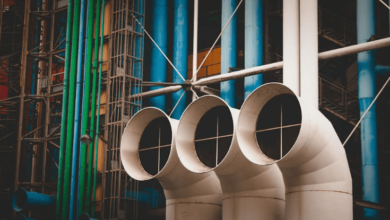10 Essential Features to Look for in Cranes for Sale

When it comes to purchasing cranes, whether for construction projects, material handling, or other industrial applications, selecting the right equipment is crucial for efficiency, safety, and overall project success. With a multitude of options available in the market, it’s essential to focus on specific features that cater to your project needs. Here are 10 essential features to look for when considering cranes for sale.
1. Load Capacity:
The primary function of a crane is to lift and move heavy loads. Assess the maximum load capacity the crane can handle to ensure it aligns with your project requirements. It’s crucial to choose a crane with a load capacity that provides a safety margin above your heaviest anticipated loads.
2. Reach and Height:
Consider the maximum reach and height the crane can achieve. This is especially important for construction projects where lifting materials to elevated areas is common. Opt for a crane with the reach and height capabilities that match your project’s specifications.
3. Mobility:
Evaluate the mobility of the crane, considering the terrain and environment of your project site. Some cranes are designed for rough terrains, while others are suitable for more controlled environments. Ensure the crane’s mobility aligns with the conditions it will be operating in.
4. Ease of Operation:
Look for cranes that are user-friendly and easy to operate. This is crucial for ensuring the safety of the crane operators and enhancing overall productivity. Features such as intuitive controls, ergonomic design, and advanced technology for precision operation can contribute to ease of use.
5. Safety Features:
Safety should be a top priority when selecting a crane. Features like overload protection, emergency stop buttons, anti-collision systems, and advanced monitoring technologies contribute to a safer working environment. Prioritise cranes that adhere to industry safety standards and regulations.
6. Maintenance Requirements:
Consider the maintenance requirements of the crane. Opt for models that are easy to maintain and provide convenient access to critical components for servicing. Regular maintenance is essential for ensuring the longevity and reliability of the equipment.
7. Environmental Considerations:
Evaluate the environmental impact of the crane, including fuel efficiency and emissions. Choosing eco-friendly options not only aligns with sustainability goals but can also lead to cost savings in the long run.
8. Versatility:
Select a crane that offers versatility in terms of applications. A versatile crane can adapt to different job requirements, providing a cost-effective solution for various projects. This adaptability is particularly valuable in dynamic construction environments.
9. Technology Integration:
Modern cranes often come with advanced technologies such as telematics, GPS tracking, and remote monitoring. These features can enhance overall efficiency, provide real-time data on crane performance, and contribute to better project management.
10. Budget Considerations:
While it’s essential to focus on the features that meet your project requirements, staying within budget is also critical. Evaluate the overall cost of ownership, including maintenance, fuel, and operational expenses, to ensure the crane aligns with your financial constraints.
Conclusion
Selecting the right crane involves a careful consideration of various features to meet the specific needs of your project. Whether it’s load capacity, mobility, safety features, or technology integration, each aspect plays a crucial role in the overall performance and success of the crane in your work environment. Take the time to thoroughly assess these features when exploring cranes for sale to make an informed and strategic investment in your construction or industrial operations.



